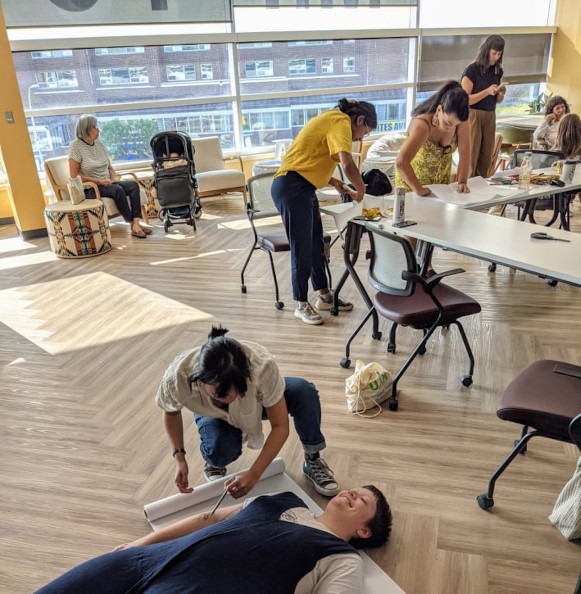Re-Indigenizing Treaty 1 and beyond
The Space Between Us provides opportunities for BIPOC artists

The Space Between Us is a U of W-led project aiming to re-Indigenize urban centres and universities through public art and technology.
A new initiative is being brought to life by University of Winnipeg (U of W) art history professor Dr. Julie Nagam. Nagam is working alongside an international team of BIPOC artists and researchers, who are passionate about re-Indigenizing urban centres and universities through public art and technology.
The Space Between Us is a project that is developing a mentorship network that creates spaces for racialized and marginalized students, staff and community members. The project aims to create safe spaces for racialized people to learn about their cultures through art, then bring it to life through a vast number of available mediums and technologies.
After receiving a $2.5 million Social Science and Humanities Research Council (SSHRC) partnership grant, the project’s funding has been elevated to approximately $6 million, thanks to over 40 researchers and 31 partners spanning across the globe, covering Canada, the United States, Norway, Greenland, Australia, New Zealand and Finland.
Dr. Serena Keshavjee, a U of W art history professor, is a collaborator on this project. She explains that it’s about more than just art, and also about making stories accessible to all people.
Keshavjee says “making spaces more transparent, making them more inviting and privileging Indigenous art would help” make the stories and cultures told through art more accessible and widely known.
“I call it re-Indigenizing Treaty 1,” Keeshavjee says. “It was an Indigenous place, and then Indigenous people were kept out, like physically by being put into reserves and that pass system ... now we are re-Indigenizing it.”
Jasmin Winter, the Aabijijiwan team lab co-ordinator at the U of W, says she is passionate about “how emerging technologies, such as virtual reality, video games and app development could support cultural and language revitalization amongst Indigenous and racialized communities.”
It is important that people recognize and acknowledge that “Indigenous peoples, especially ... are the original innovators on this land that we now call Canada,” Winter says. They “are the original artists of this land. I think it is so important to let that sink in.”
Through the use of varying mediums, people from all walks of life are able to connect over the beauty of an art piece, the power of a story or the fun of a game.
Creating and sharing art “can be a bit delicate,” Winter says. “You never want to put Indigenous and racialized artists in boxes and expect every single thing that they produce to have something to do with, let’s say, the environment or even colonization or even being explicitly about culture.”
These tunnel-visioned expectations can create marginalizing stereotypes for Artists of Colour and limit their ability to produce work that is outside of these expectations. Winter explains that this can result in racialized artists questioning their abilities outside of those strict topic constraints, which can deter some artists from freely creating.
The power of art is unmatchable, as it builds bridges that close the spaces between people, because, as Winter says, “one piece of art can tell as much as a PhD thesis.”
The next initiative to launch from The Space Between Us will open to the public on Oct. 14 at the U of W from 3 to 6 p.m., on the third floor of Richardson College for the Environment (room 3RC060).
Published in Volume 76, Number 4 of The Uniter (October 1, 2021)






